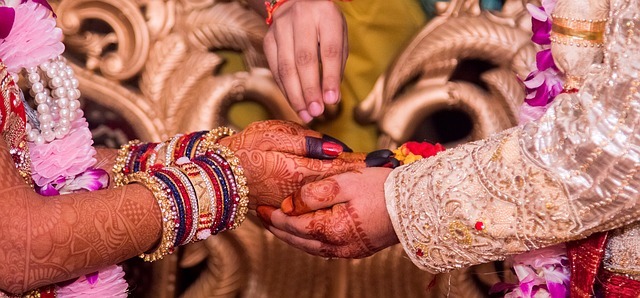What to Expect at an Indian Wedding
Being invited to share in a loved one’s special day is an unforgettable experience. Weddings are expressions of the couples’ unique traditions as well as their love for each other but depending on who is getting married and where the wedding will be held, you may need to prepare yourself for some unexpected sights and delights.
Many cultures, like the Hindus, have wedding traditions that seem vastly different from those observed in the United States, so if you become an Indian wedding guest, it would be good to familiarize yourself with how the wedding is set up and conducted. To begin with, the Hindu bride and groom don’t choose their own wedding date. It is chosen by the priest based on the bride and groom’s horoscopes to determine the most advantageous day. You may also be surprised to learn that a Hindu wedding takes place over the course of three days with the wedding ceremony itself being held on the third day.
Bridal traditions are symbolic but in different ways. Indian brides wear red dresses as opposed to white dresses. In the Hindu culture, the color red represents prosperity, passion, and new beginnings. Red is also the color of the Hindu goddess Durga, the embodiment of feminine strength. You also won’t see a ring on the hand of an Indian bride. Her hands will be painted with intricate artful designs using mehndi or paint made from henna. Beautiful yet functional, the medicinal properties of the henna are intended to help keep the bride calm while she deals with the events of the wedding day.
A gathering called a Sangeet is held a day or two before the wedding. It’s a time of joy when the families of the bride and groom dance, sing, and listen to music. The families and the guests wear bright colors throughout the wedding festivities with the exceptions of red and black. Red is reserved for the bride and black is never appropriate for an Indian wedding or most other weddings.
Traditional Indian foods will be served at the ceremonies which include rice, curries, samosas with chutney, seasoned flatbreads, and desserts made from fried balls of dough and soaked in rose flavored syrup.
When the day of the actual ceremony arrives, it’s the groom who is ushered into the location with the fanfare of a mini parade, music, and dancing. The groom is given a garland, showered with rice, and handed a plate with a lit lamp. The father of the bride will give her away using the physical act of placing the bride’s hands inside the groom’s hands. The couple and the wedding party stand under an altar called a mandap where a fire is also lit so that the bride can feed it offerings of puffed rice. The fire is a witness to the ceremony.
A prayer to Ganesha, the god of good fortune and beginnings, is said first followed by a reading of the bride and groom’s genealogies going back at least three generations. The purpose is to testify that the bride and groom are not from the same clan. Instead of rings, the couple exchanges garlands to symbolize the completion of the marriage and the groom places a string of colored beads around the bride’s neck.
The bride’s veil is then tied to the groom’s sash to signify their friendship, the basis of a Hindu marriage. Levity during the ceremony is allowed when the bride and groom pour rice, saffron, turmeric, and sometimes pearls over each other to bring the couple happiness and prosperity. Finally, the bride’s hair is tinted using a reddish orange powder as a signal that she is now married.
At the end of the ceremony is the emotional and sometimes tearful vidaai when the bride’s parents say goodbye to their daughter so she can begin her new life with her husband. She scatters coins and rice over her head to show her gratitude for her parent’s love and care as she leaves the wedding venue.
A Hindu wedding ceremony is planned carefully and according to cultural tradition. If you are interested in planning an Indian ceremony, contact our professional experienced event planners at the PineCrest Country Club. We’ll help you make your special day perfect.



